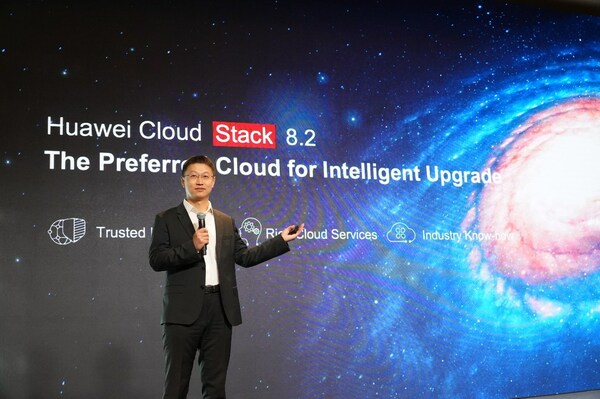BEIJING, Feb. 24, 2025 /PRNewswire/ -- When we talked about Brunei Darussalam, a small sultanate in Southeast Asia, the first idea that comes across our minds would be the fact that it is a petro-state with a Gross Domestic Product (GDP) of 47% generated from Oil and Gas Extraction. Little was known that prior to the growth in the oil and gas sector, the country was a Thalassocracy, with its economy a mixed of land, connected via the riparian regimes, and maritime with links to important regional centres of that time.
Fast forward to the second decade of the 21st century, the interest in developing the blue economy is gaining more prominence. At the heart of this new initiative is driven by the need to develop a sustainable economy that goes beyond land-based activities. The establishment of the ASEAN Blue Economy Framework signed by ASEAN member states in 2021 is a testament for this. We should also acknowledged that the term blue economy shall not be confined to fisheries or marine-related activities per se but rather, our understanding of blue economy should include how development of the coastline and coastal communities should be carried out by following the principles of sustainability. This include matters concerning urbanisation in coastal cities and how it affects quality of riverine and marine resources. It should also look into how such urbanisation, whose anthropogenic activity has closer linked to riverine and marine environment, affects both community and nature. Recent published work by colleagues from Universiti Brunei Darussalam (UBD) on blue urbanism by colleagues, Mr. Gabriel Yong Yit Vui and Dr Noor Hasharina Hassan, provides a good starting point for future work relating to blue economy development. Coupled with this developing blue economy should also consider the decarbonisation and reduction of carbon footprint. This is vital as countries try to reduce carbon emissions as well as in their battle against climate change. Conservation should not be anti-development, should not be against developing marine and riverine resource-based industries. Under the Sustainable Development Goals (SDG 17) agenda, there is a need to thread the slippery road of developing sustainably without jeopardizing the needs and the welfare communities. This is where the Green and Blue technologies come into play.
Where do China comes in in this renewed dynamism? I believed with the current technological advantage that China develop internally, coupled with the development of Artificial Intelligence (AI), cloud-based technologies, decarbonised industries and the transport connectivities brought about by the Belt and Road Initiatives, this is where the opportunity lies for ASEAN. For Brunei to gain advantage, reaffirming and deepening of current relationships and collaborations is a step forward. China-Brunei partnership have moved beyond fisheries and infrastructural development and cooperation. We have also seen fisheries joint ventures (JVs) being developed even prior to the 2021 blue economic framework. In the marine aquaculture for instance, JV and foreign direct investment under the Guangxi Economic Corridor have led to the establishment of Hiseaton (B) Ltd, a subsidiary of Haishitong Ltd of China. Upgrading of seafood processing infrastructure of Brunei-Taiwan JV, Golden Corporation Ltd, by Hainan Bingfengxue Refrigeration Co. Ltd (China) is another example of close partnership with China. We also see some transfer of technology to local producers although this needs to be studied further in terms of its effectiveness. Recently, the signing of two export protocols from Brunei into China relating to wildlife aquatic products as well as cultured aquatic products also highlighted the deepening of economic relationship.
Although this development is highly encouraging and positive, there are still avenues for improvement. At present, this development is still seen as sectoral and not really integrated. There is a need to evaluate the effects of land use changes and urbanisation along the coast on the near shore and off shore marine farms or ranches of Brunei. China has been doing rigorous studies on this in China as evident in many research conducted by Chinese higher educational institutions. Current labour policy should assist in easing movements or migration of highly skilled professional workers involved in blue economy activities. This may involve movement of professionals like scientists, academics, consultants, law makers or accountants, or even mid level professionals such as managers. There is a need to streamline national foreign labour policy and requirement to spur localised learning. Intra-ASEAN investment on blue economic initiative as well as direct investment from China is also needed to support growth further. Current capacity and capabilities building measures conducted by China for ASEAN member states should also continue as part of a long-term goal. Only by giving such assistance that development can be assured. ASEAN on the other hand, should also provide China and Chinese investors on the current economic, cultural and political climate of each ASEAN member states in order to foster equal learning. Only by knowing each other and familiarizing with the plight and status of current ASEAN members states that targeted and effective development strategies can be formulated. For countries sharing the Brunei Bay Area, potential industries connected to marine transportation connectivity can also be explored as historically, communities of the bay area had been active in regional exchanges. It might be worth to explore this as new avenue of industrial development. Countries like Brunei need to look beyond traditional land-based transport connectivity to ease movement of goods. Exploring the connectivity via the waterways in the Brunei Bay may provide an impetus towards new blue economic development.
I hope this piece can shed some light on current blue initiatives that is taking place in Brunei. The country is undoubtedly committed in bringing about change and towards the betterment of its community and international partners. However, as any other countries, there is also the need to acknowledge the importance of constant cooperation and collaborations with other regional and international players to allow for transformation to happen. Only by doing so, current goal of developing the blue economy can be achieved.
(This article is a contribution from Izni Azrein Noor Azalie, invited by China-ASEAN Observation. Izni is a lecturer in the Geography and Development Department at Universiti Brunei Darussalam. The views expressed are solely those of the author and do not necessarily reflect the views of China-ASEAN Observation.)
About China-ASEAN Observation
https://www.coa-observation.com/
Established by China Center for International Communication Development (CCICD) in 2024, China-ASEAN Observation is a dedicated content platform focusing on various aspects of China-ASEAN relations, including economic and trade cooperation, cultural exchanges, and regional developments. The platform gathers insights from experts and scholars across China and ASEAN, offering analytical articles that provide perspectives on key topics such as the current state and future prospects of China-ASEAN cooperation, the development of a shared future community, high-level exchanges, regional peace and stability, economic and trade trends, the South China Sea, technology, and cultural tourism. In addition to commentary, the platform incorporates data visualizations, infographics, and illustrations to present information in a diversified manner.
China-ASEAN Observation collaborates with multiple Chinese media platforms to establish a content-sharing mechanism, expanding its reach and influence. By providing in-depth perspectives and diverse content, China-ASEAN Observation aims to be a leading voice in fostering mutual understanding and cooperation between China and ASEAN nations.












